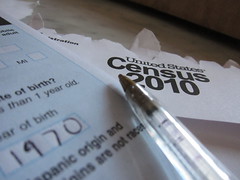Please welcome Guest Blogger, Nathan Palmer. Nathan is faculty in the Department of Sociology and Anthropology at Georgia Southern University, where he teaches Introduction to Sociology, Social Problems, and Environmental Sociology. Nathan’s research interests are focused on the scholarship of teaching and learning, inequality, education, and environmental sociology.
Nathan is also the editor of the teaching sociology focused blog SociologySource.com. The post below is the first in a series of 3 posts by Nathan.
Teaching students how to design a survey can be tricky because the process is deceptively easy. Students think, “Hey, I have taken tons of surveys before. How hard can it be?” They then proceed to break every rule of good design that you discussed in class.
A simple, quick, yet effective activity to teach good survey design is to have your students take a survey that is horribly designed. I tell my students that I want no talking and then pass out a survey about internet usage (download it here). Every question on the survey is either double barreled, leading, biased, or has response options that make no sense or overlap. After a few minutes I tell them to stop and ask what they think of the survey. They uniformly say it’s awful.
Students really like this activity. Typically they laugh out loud when reading the questions. I have them pair up and identify everything that is wrong with the questions. As a class we go through each question picking it apart. We then formulate new questions that don’t violate any of the basic survey design rules.
The activity is also beneficial because students get to take home an example of what not to do that they can compare their work against when creating their own survey. Pedagogically I really like this activity because it has the students playing an active role in their education. Also, the “bad survey” is formatted well so you can tell your students that their survey should look like the example you gave them, but with much better questions.


Comments 3
Sue Palmer — September 17, 2010
Impressive Mr. Palmer I will enjoy following your work further.
Lory — September 19, 2010
Awesome idea. I will use it in two of my courses this Fall and for one of my honors students working on a Sr. Thesis. Thanks!
Mediha — August 17, 2011
Thank you for sharing. I do something very similar in my intro to soc course. Here is the survey I created:
In Class Partner Activity. Developing Strong Survey and/or Interview Questions
With 1-2 partners: Read the questions. Discuss with a partner those questions that you feel are weak. Why is it weak? How can the question be re-worded to improve it?
1. Do you feel that poverty and lack of supervision for youth contribute to crime in your community?
2. When you were in 1st grade did you have neat handwriting?
3. How many days a week do you smoke marijuana?
4. Do you fulfill your responsibility as a parent and read to your child every night?
5. Do you disagree with those who do not think young people care about their futures?
6. Do you volunteer often?
7. Have you ever endangered innocent lives and broken the law by driving while under the influence of alcohol?
8. Teachers work very hard and often spend their own money on classroom supplies. They also often spend their free time working on lessons, mentoring clubs, or tutoring students. Do you think teachers should be paid more for all the hard work they do?